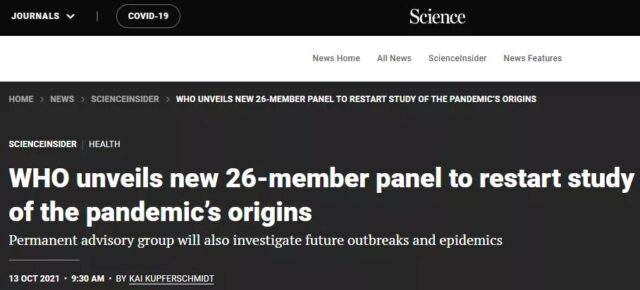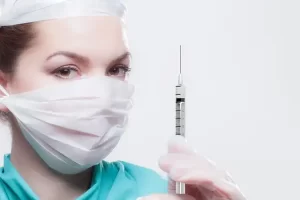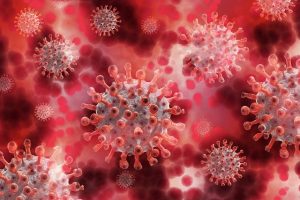Science: WHO restart the research on the origin of COVID-19
- Mifepristone: A Safe and Effective Abortion Option Amidst Controversy
- Asbestos Detected in Buildings Damaged in Ukraine: Analyzed by Japanese Company
- New Ocrevus Subcutaneous Injection Therapy Shows Promising Results in Multiple Sclerosis Treatmen
- Dutch Man Infected with COVID-19 for 613 Days Dies: Accumulating Over 50 Virus Mutations
- Engineered Soybeans with Pig Protein: A Promising Alternative or Pandora’s Dish?
- Severe Fever with Thrombocytopenia Syndrome (SFTS): A Tick-Borne Threat with High Mortality
Science: WHO restart the research on the origin of COVID-19 that may have come from laboratory leaks!
- Red Yeast Rice Scare Grips Japan: Over 114 Hospitalized and 5 Deaths
- Long COVID Brain Fog: Blood-Brain Barrier Damage and Persistent Inflammation
- FDA has mandated a top-level black box warning for all marketed CAR-T therapies
- Can people with high blood pressure eat peanuts?
- What is the difference between dopamine and dobutamine?
- How long can the patient live after heart stent surgery?
Science: WHO restart the research on the origin of COVID-19 that may have come from laboratory leaks!
On October 13, WHO announced that it would launch a new 26-person team to restart research on the origin of the COVID-19 pandemic. The researchers published this in Science.
The scientific advisory team on the origin of the new pathogen (SAGO) is probably the best and last opportunity to trace the origin of the COVID-19.
It will also be responsible for studying the origin of future epidemics and epidemics. This powerful team also includes a Chinese candidate, Yang Yungui, deputy director of the Beijing Institute of Genomics, Chinese Academy of Sciences.
Early research reports support the natural source of SARS-CoV-2, and WHO Director-General Dr. Tedros Adhanoman believes that it is too early to deny laboratory leaks, so SAGO will consider the theory of laboratory leaks.
The World Health Organization (WHO) announced on October 13 that it will set up a new research team to investigate the origin of the COVID-19 pandemic.
The Scientific Advisory Group on the Origin of New Pathogens (SAGO) will also be responsible for studying the origin of future epidemics and epidemics, and guiding the research of emerging pathogens more broadly.
On October 13, the researchers published an article titled “WHO unveils new 26-member panel to restart study of the pandemic’s origins” in “Science”.
 doi: 10.1126/science.acx9352
doi: 10.1126/science.acx9352
The list of SAGO members proposed by WHO includes 26 researchers from 26 countries, 11 of whom are women.
Earlier this year, six members of the international team traveled to China to study the origin of the epidemic with their Chinese colleagues.
Early research reports support the natural source of SARS-CoV-2, saying that a leak in the laboratory is “extremely unlikely.” However, the WHO Director-General later stated that it is too early to rule out this hypothesis.
WHO has selected the proposed members from more than 700 applicants; after two weeks of public consultation, the relevant decision will be formally confirmed.
Among them, SAGO has a Chinese candidate: Yang Yungui (transliteration), deputy director of the Beijing Institute of Genomics, Chinese Academy of Sciences. He was one of the Chinese leaders during the first “Origin” mission.
The nominated US member is Inger Damon, director of the High-Consequence Pathogens and Pathology Department of the Centers for Disease Control and Prevention.
Georgetown University‘s lawyer Alexandra Phelan, who specializes in global health, said, “This is an impressive team of experts” with “relatively good gender and geographic representation.”
Nevertheless, she added, “Considering the historical inequality, an international team of experts like this should really target more than 42% of women.”
Phelan pointed out that SAGO’s terms of reference also include expertise in “ethics and social sciences or other activities” related to disease outbreaks. Judging from the information currently available, the organization seems to lack expertise in these areas. She herself also applied to join the team. “Having this set of skills will facilitate any future origin investigations.”
The work of the early WHO “Origin” team was carried out in a complex political posture, conflicts of interest, and lack of support theories, which eventually brought research to a halt.
WHO Director-General Tedros Adhanom Ghebreyesus and two senior COVID-19 officials of the agency wrote in an editorial published on October 13 in Science magazine that such problems have also appeared in previous investigations.
They wrote: “Every time, scientists in WHO and elsewhere face challenges, not only scientific challenges, but also logistical and political challenges.”
WHO hopes that the establishment of a permanent team will eliminate some of the “hot” in the current debate about the origin of COVID-19 and make future investigations of new pathogens more standardized.
Maria Van Kerkhove, head of emerging and zoonotic diseases of the WHO Health Emergencies Plan and co-author of the editorial, told Science in August: “We want to shift it more from the political debate to Scientific debate.
This is our real goal now. “SAGO’s broad focus will be where, why and how dangerous animal pathogens infect humans, what measures can be taken to reduce such spillovers, and how to prevent them from becoming a major epidemic.
However, its terms of reference clearly stipulate that it must also conduct an “independent assessment” of the existing evidence on the origin of the current pandemic and make recommendations to the WHO on the “next series of studies”. Van Kerkhove said at a press conference in Geneva on the afternoon of the 13th that this is an urgent matter: “There is no time to waste.”
However, this may lead to new tensions. The WHO’s initial research concluded that the laboratory source of the new coronavirus is “extremely unlikely” and said it will not investigate this option further.
Dr. Tedros later called the conclusion “too early”, and the “Science” editorial clearly pointed out that SAGO will have to consider the theory of laboratory leaks: “Unless there is sufficient evidence to prove that these experimental results are public, otherwise The laboratory accident cannot be ruled out,” Tedros and his co-authors wrote.
Nevertheless, one of the original remaining WHO members who joined the new team, Marion Koopmans, a virologist at the Erasmus Medical Center, said that SAGO still has a chance to get the search for the source of SARS-CoV-2 back on track. If I did not think so, I would not agree to participate.
She admits that the sheer size of this team may not make the discussion easier: “This is a good research team, but I hope it is still action-oriented.”
A member of WHO’s first mission (but not in the new team), wildlife veterinarian Fabian Leendertz said: “It is a wise idea to build a team like SAGO.
But it is important that this should not prevent independent teams who can arrive at the scene quickly once an outbreak is detected to investigate the source of the outbreak on their own. “SAGO may eventually convene several independent teams and external experts to investigate different hypotheses and advance the research proposed in the first set of reports.
The author of this editorial also includes Michael Ryan, Executive Director of the WHO Health Emergencies Program. He mentioned several research avenues that SAGO needs to carry out, including wild animals and severe acute respiratory syndrome (such as transmission in bats in China and Southeast Asia). Coronavirus).
In addition, they wrote: “There is still an urgent need for investigations of the earliest known and suspected cases before December 2019, retrospective searches of hospitals, and mortality data for early cases.”
The initial mission pointed out that scientists can find clues to the origin by detecting up to 200,000 samples stored in blood banks, some of which can be traced back to before the outbreak in December 2019.
The scientists of the Chinese team in charge of the mission said that China will share the findings of these samples, but explained that due to legal reasons, these samples cannot be investigated for two years after the date of collection.
CNN reported on the 13th that, according to an unnamed official from the National Health Commission of China, “test preparations are currently underway. Once the two-year deadline is reached, confirmation testing will be carried out.”
This means that in October 2019, evolutionary biologists suspected that SARS-CoV-2 may first invade the human body, and now it can be tested for coronavirus antibodies. Theoretically, a positive sample may trigger a new epidemiological link that reveals the origin of the epidemic.
At the press conference, Ryan called on countries, media and the public to “give SAGO some space to carry out its work.”
He said: “All the scientists involved in this process understand these external pressures and reviews, and the visibility of this process. This may be our last chance to understand this virus in a collective and responsible manner. the origin.”
Reference:
https://www.science.org/content/article/who-unveils-new-26-member-panel-restart-study-pandemic-s-origins
Science: WHO restart research on the origin of COVID-19
(source:internet, reference only)
Disclaimer of medicaltrend.org
Important Note: The information provided is for informational purposes only and should not be considered as medical advice.



